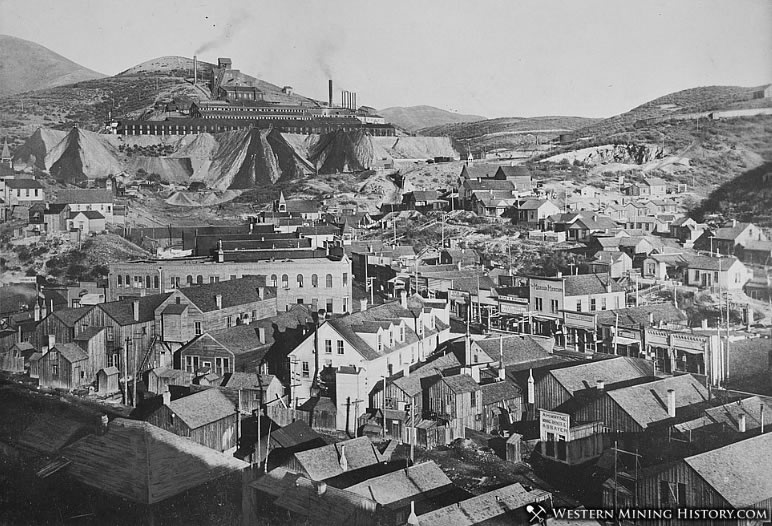Mercur History
The first mineral location in the area was a gold placer claim, and the district was organized in 1870. Placer mining, however, was unsuccessful because of the low grade and lack of water.
Early discoveries of rich silver lodes also proved to be disappointing. Interest in the area declined to the extent that the town of Lewiston, which had a population of 1,500 in the 1870's, became largely deserted.
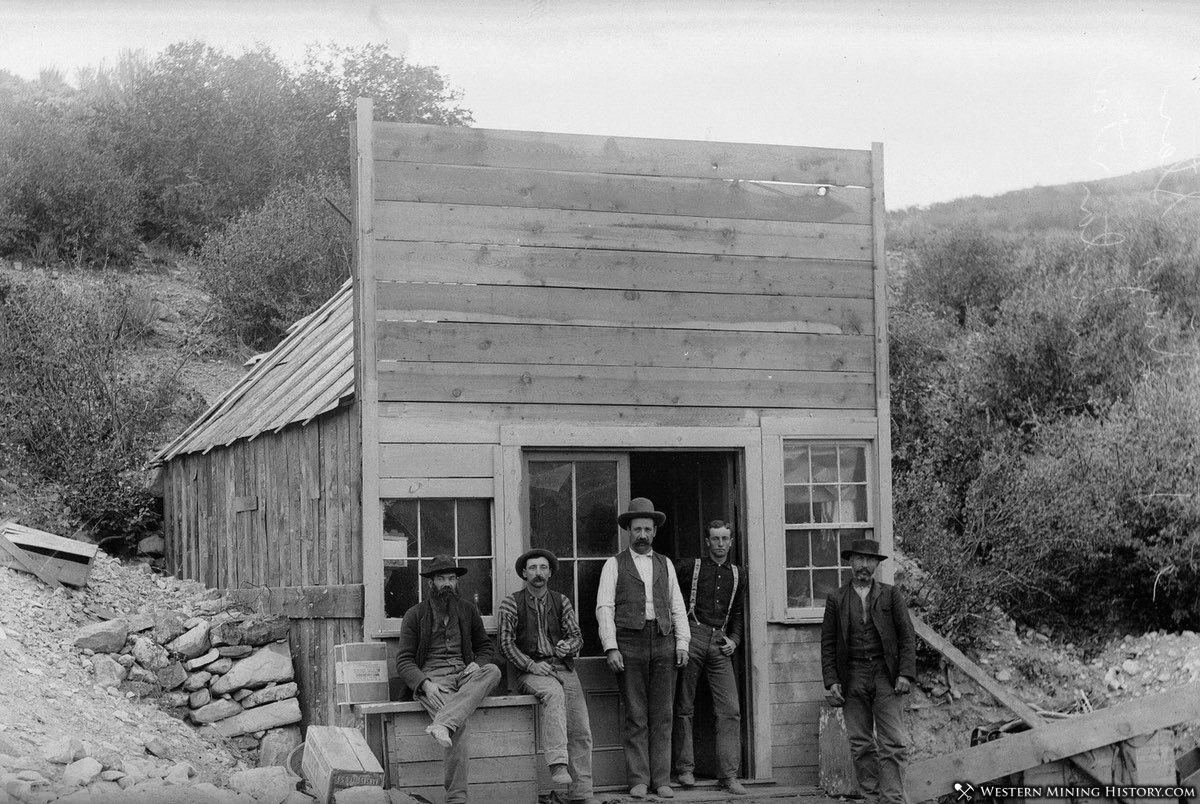
The Mercur lode, at first unsuccessfully worked as a mercury deposit, had a high content of gold, but the gold could not be recovered by the amalgamation treatment commonly used at that time. In 1890 attempts to treat the Mercur ore by the newly developed cyanide process were successful. As a result, prospectors again swarmed into the district, the town of Mercur was built on the old site of Lewiston, and new mines were developed rapidly.
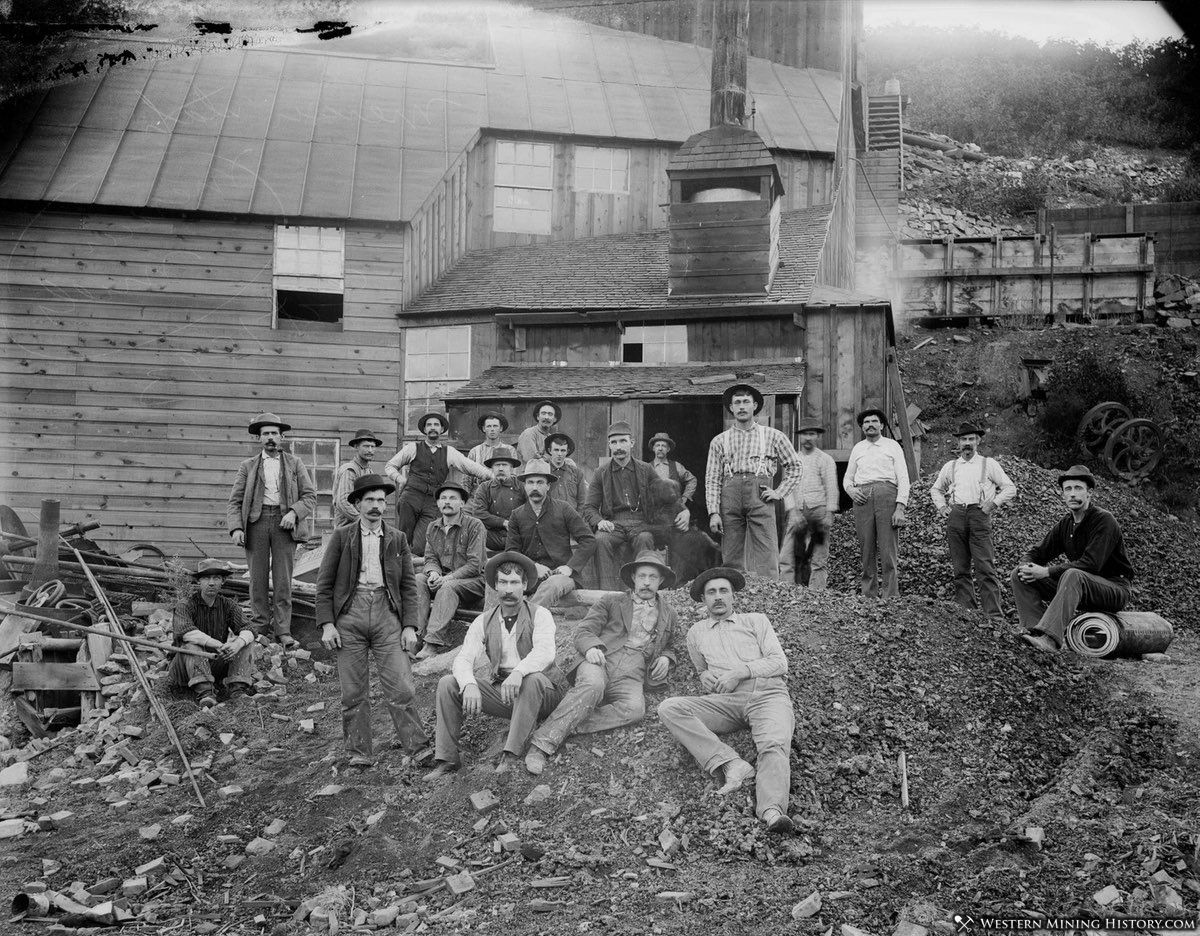
The Utah Geological Survey provides additional information on the early history of Mercur:
The district was originally organized in 1870, and the initial production was from high-grade silver pockets. However, this early boom quickly faded and the camp was reorganized and renamed Mercur after a cinnabar (mercury sulfide) discovery in 1879. In 1883, a “gold ledge” was discovered, but the gold could not be recovered economically (because the grains were too small to concentrate) until the mine began using the “new” cyanide process in about 1890. In 1897, the 1000-ton-per-day Golden Gate mill at Mercur was the largest cyanide mill in the U.S., and it operated very successfully until about 1913 when decreasing gold grades from the mine made the operation unprofitable.
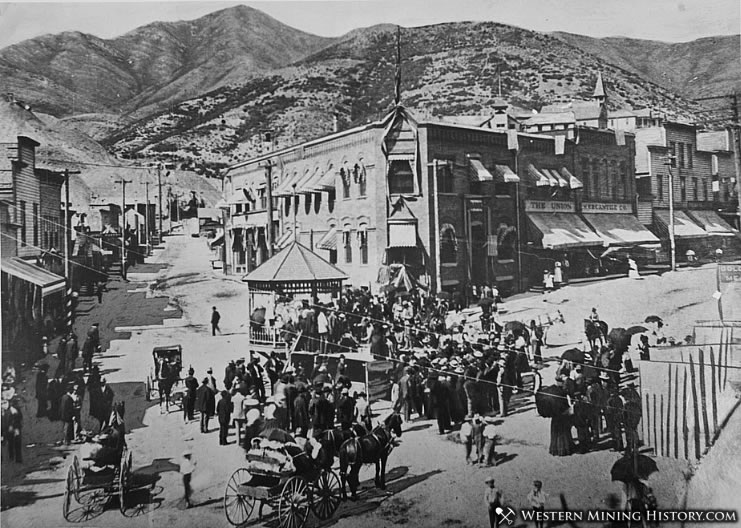
The initial period of prosperity lasted from 1890 to 1917, during which time the Mercur, Delamar, Geyser-Marion, Sacramento, Sunshine, Overland, Daisy, and La Cigale mines were the chief producers. Mines were closed from 1917 through 1931, but in 1932 some were reactivated, and in 1933 a 500-ton cyanide plant was constructed to treat old tailings.
Enthusiasm generated by increased prices in 1934 caused a significant resurgence of activity that lasted until 1945, when the mines again were closed. No production was reported from 1949 through 1959. An open-pit mine was developed at Mercur starting in 1985, and the townsite vanished with the expansion of the new mine. Over 2.5 million ounces of gold were mined here, making it the state's largest primary gold mining district.
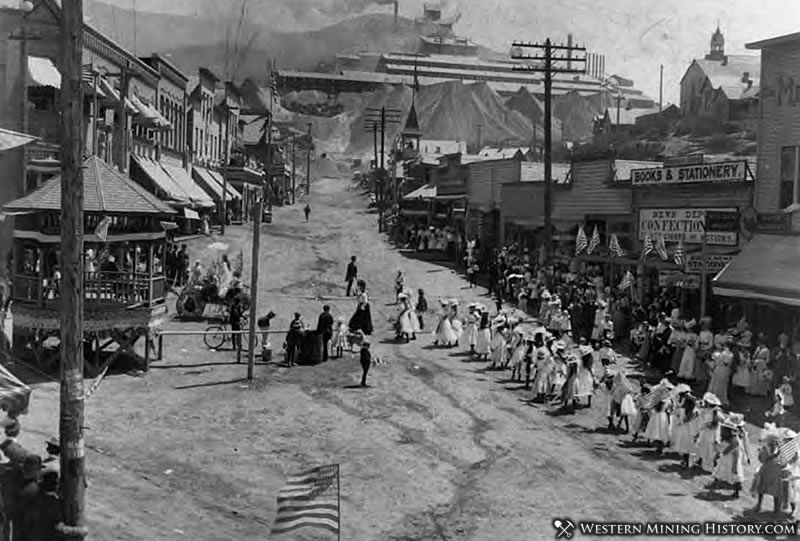
Lewiston had a post office approximately 1872-1882, while Mercur's post office was active between 1893-1914 and 1937-1944.
Mercur Destroyed By Fire
On June 25th, 1902, most of the town of Mercur was destroyed by fire. The district was experiencing a boom at the time, so the city was rebuilt. However, the degree to which it was rebuilt is unclear. The photo at the top of this page is undated, but the before and after pics of the fire almost certainly identify it as a pre-fire scene. Sanborn fire maps from 1903 show a greatly-diminished business district, but additional construction could have continued after the map was made.
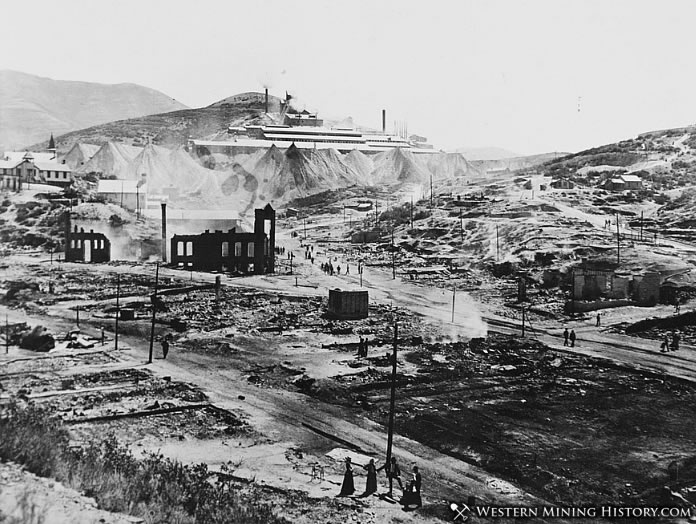
A June 25, 1902 edition of the Salt Lake Telegram reported on the fire:
MERCUR IS DESTROYED BY FIRE; AN APPEAL IS MADE FOR SUPPLIES OF FOOD
Eighty Per Cent of the Buildings in the Town Burned and Every Business House in Ruins.
MERCUR, Utah, June 25,- Eighty per cent of the buildings in Mercur are in ashes. Main street is devastated, swept clean by the flames. Where at 9 o'clock this morning stood a busy, prosperous little city there is nothing but a long stretch of blackened ruins. Every business house in the town is burned to the ground, every store, restaurant, hotel, bank, not a single structure left. Many Residences Burned.
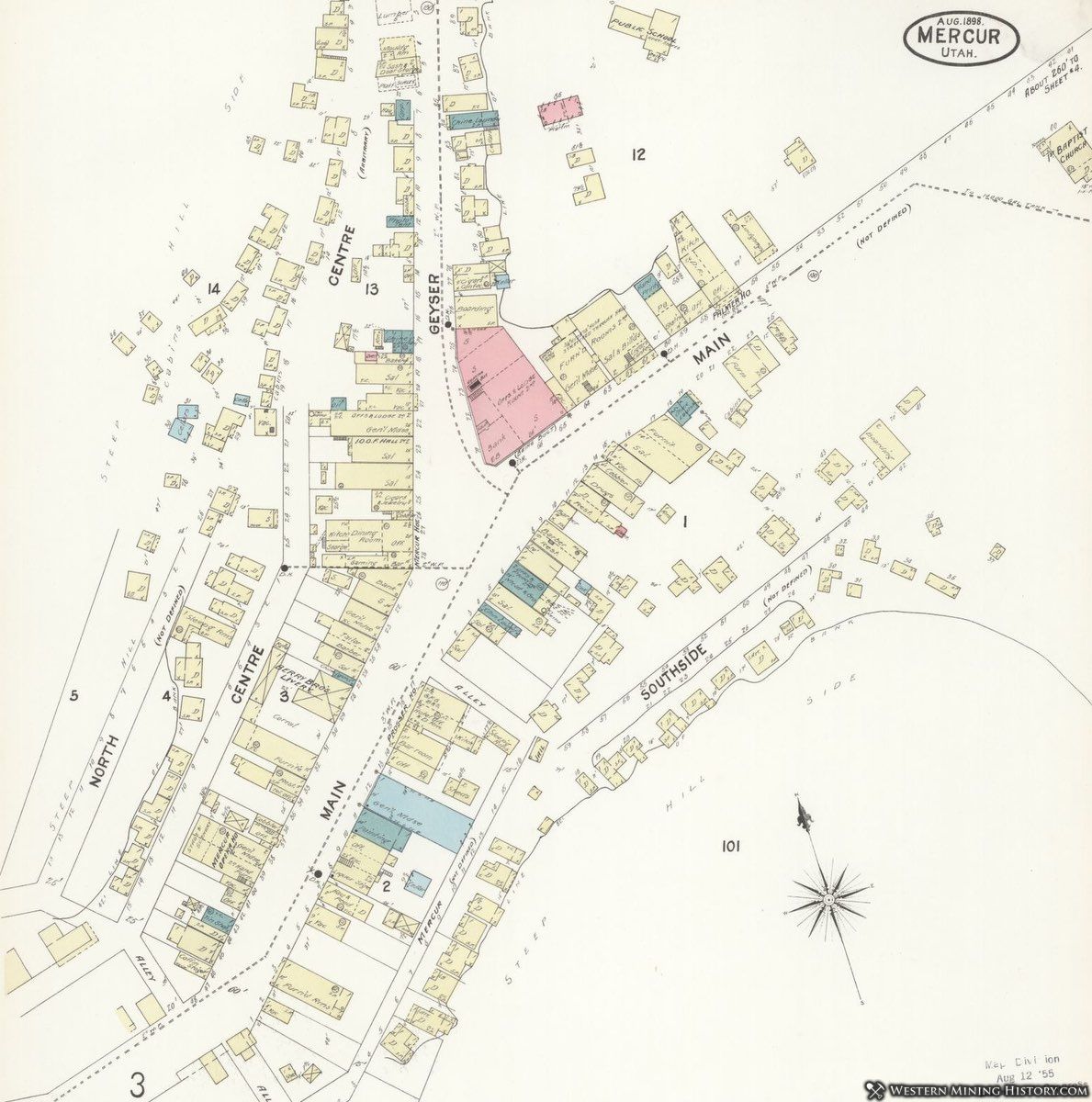
More than this, all residences upon Main street and in that vicinity are also consumed, and many persons are homeless. Only such houses as were out of the line of the fire escaped.
The condition is one hard to realize, There is nothing saved from the stocks of merchandise and the supplies of the hotels and restaurants. The people need and must have, without delay, meat, groceries and other provisions.
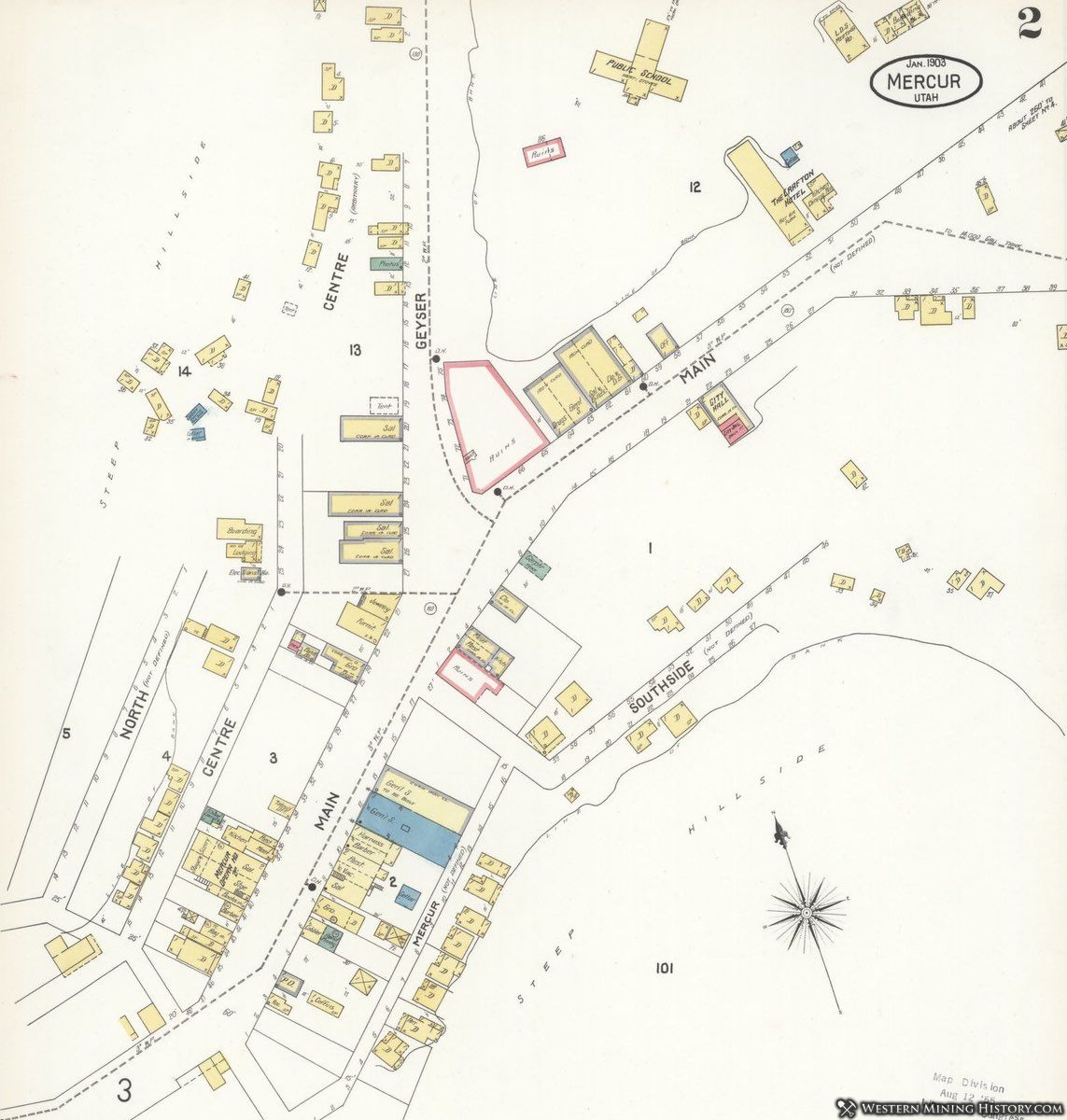
Origin of the Fire
The fire was discovered at 9:30 this morning, and originated in an upper room of the Ophir hotel, which is situated in the north end of Main street. No positive information as to the cause of its origin is obtainable, and theories are uncertain and conflicting,
At the time the flames were first discovered the fire had not made great headway, but the Ophir hotel was a frame building that burned like tinder, and by the time the little fire department reached the scene the structure was a seething mass of flames, which quickly spread to adjoining bulldings.
Started Breeze of Fire
The air was calm before the fire, but the fierceness with which the dry buildings burned created a breeze that fanned the flames to still greater fury. Flying brands were blown across the street and in ten minutes the confagration was beyond human power to check, handicapped as the citizens were by lack of water and the crowded condition of the narrow street.
The people fought bravely, but to no avail.
Wrapped in Flames
In less than an hour the entire street was wrapped in the flames, which had spread with such rapidity that there was no time to save anything from the buildings consumed. By noon the fire Was subsiding, the entire street was consumed, and only the scattering residences on the outskirts were left.
Both sides of Main street from end to end have been completely destroyed, approximately 125 building having been burned.
Fire Under Control
At 2 o'clock the fire was practically over; there was nothing left for the flames to consume.
The Ophir hotel, in which the fire started, is owned by C. L. Preble. The Union Mercantile Co.'s building, McCornick & Co.'s bank, were the only two brick buildings in the city. Three buildings adjoining the Union Mercantile Co.'s building. owned by C. H. Ranston of Salt Lake, were consumed, at a loss of $3300, with no Insurance.
